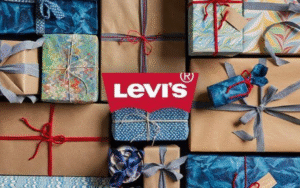In recent years, minimalist furniture has gained significant popularity due to its simplicity, functionality, and aesthetic appeal. However, the roots of minimalist furniture can be traced back several decades. This article explores the evolution of minimalist furniture over the years, highlighting key design movements and influential designers who have shaped this style.

The Mid-20th Century: The Beginning of Minimalism
The mid-20th century marked the emergence of minimalism as a design movement. Influenced by the Bauhaus school of design, which emphasized simplicity and functionality, minimalist furniture began to take shape. Designers such as Ludwig Mies van der Rohe and Marcel Breuer embraced clean lines, geometric shapes, and the use of industrial materials like steel and glass.
During this period, iconic minimalist furniture pieces were created, including the Barcelona Chair by Mies van der Rohe and the Wassily Chair by Marcel Breuer. These designs showcased the essence of minimalism – simplicity, elegance, and practicality.
The 1960s and 1970s: Scandinavian Influence
In the 1960s and 1970s, Scandinavian design greatly influenced the evolution of minimalist furniture. Scandinavian designers focused on functionalism, craftsmanship, and natural materials. This approach resulted in furniture designs characterized by clean lines, organic shapes, and a minimalist color palette.
Notable Scandinavian designers such as Arne Jacobsen, Hans Wegner, and Verner Panton created iconic minimalist furniture pieces that are still highly regarded today. The Egg Chair by Arne Jacobsen and the Wishbone Chair by Hans Wegner are prime examples of their influential work.
1990s to Present: Minimalism Goes Mainstream
In the 1990s, minimalism gained mainstream popularity, becoming a dominant design trend. This shift can be attributed to the rising interest in decluttering, simplicity, and the desire for a more balanced and peaceful living environment.
During this period, minimalist furniture evolved to incorporate a mix of traditional and contemporary elements. Designers started experimenting with new materials, textures, and colors while still adhering to the minimalist principles of clean lines and functionality.
Prominent minimalist furniture designers of this era include Philippe Starck, Jasper Morrison, and Naoto Fukasawa. Their designs focus on simplicity, comfort, and sustainability, reflecting the changing needs and values of modern consumers.
The Future of Minimalist Furniture
The evolution of minimalist furniture continues to evolve as new technologies, materials, and design philosophies emerge. Contemporary designers are pushing boundaries by incorporating innovative features, such as multi-functionality and smart technology, without compromising the core principles of minimalism.
As society becomes more conscious of sustainability and the impact of consumerism, minimalist furniture is likely to adapt further to promote eco-friendly practices. Designers will continue to explore ways to create furniture that maximizes functionality while minimizing waste and environmental impact.
The evolution of minimalist furniture over the decades has been influenced by various design movements and visionary designers. From the Bauhaus movement to Scandinavian design and the present-day focus on sustainability, minimalist furniture continues to captivate us with its timeless elegance and practicality.












